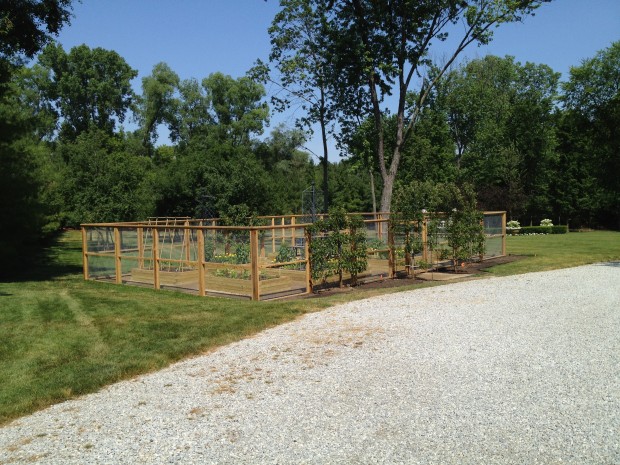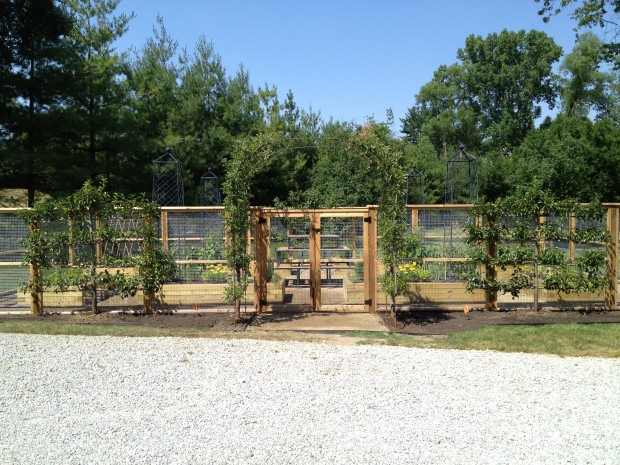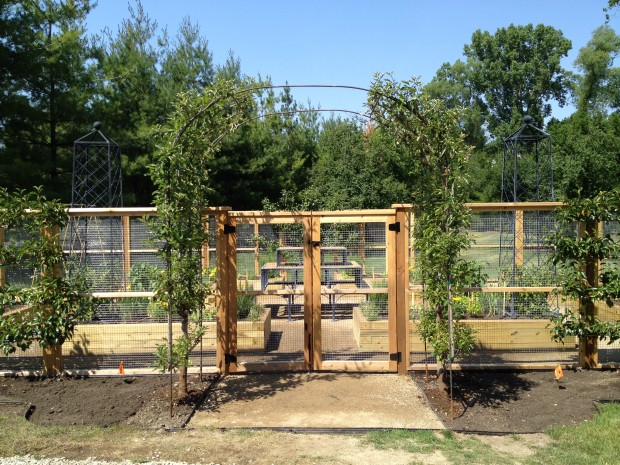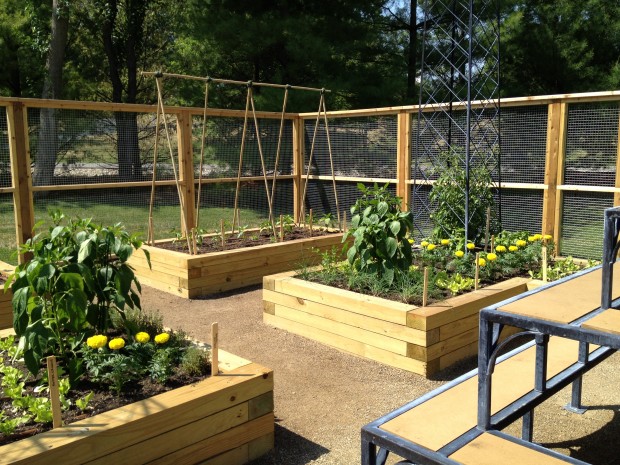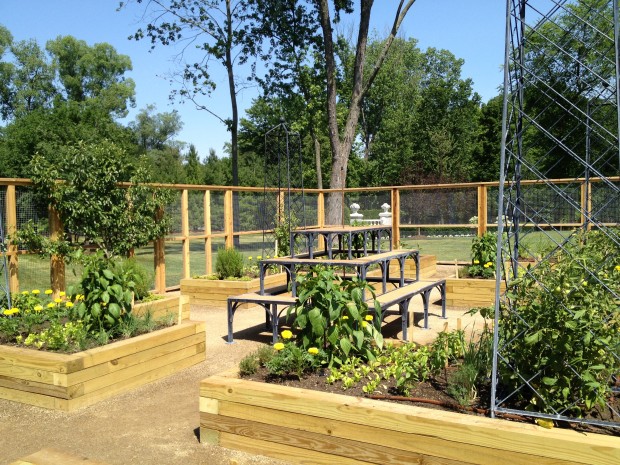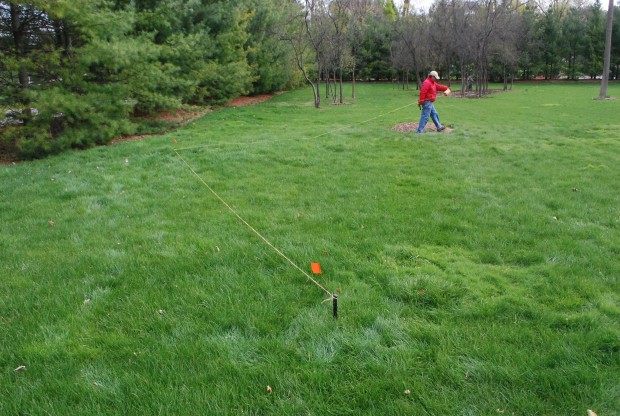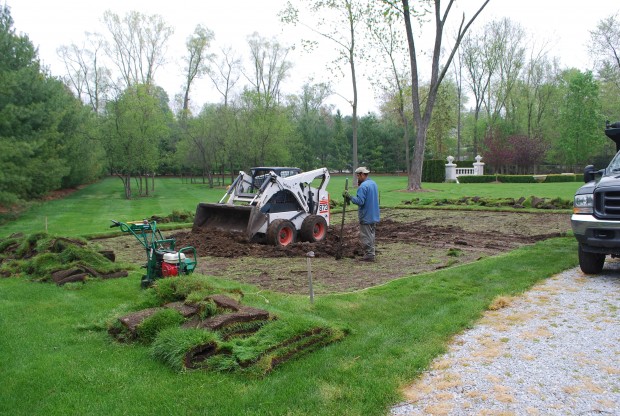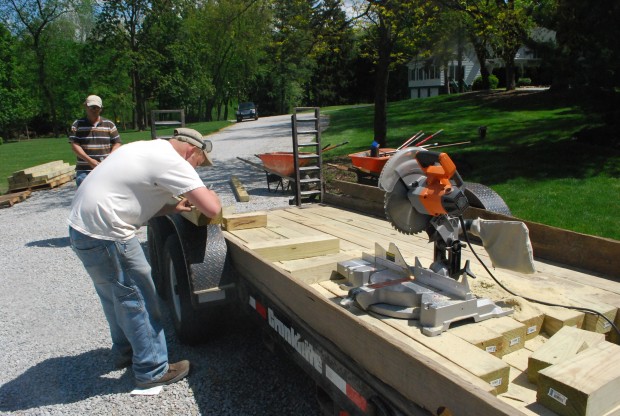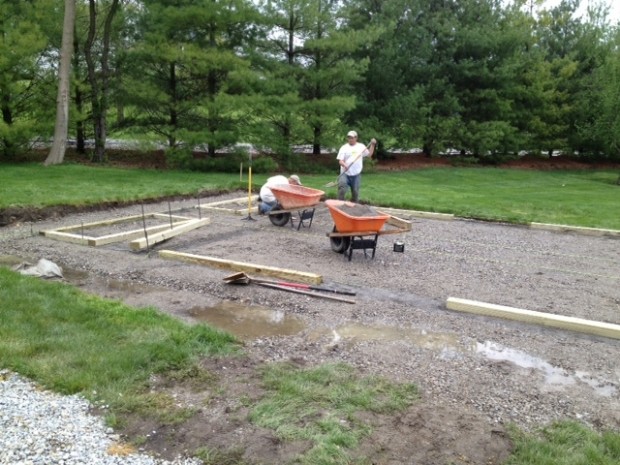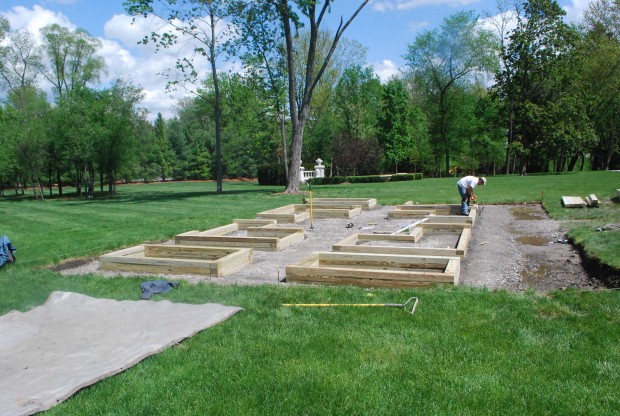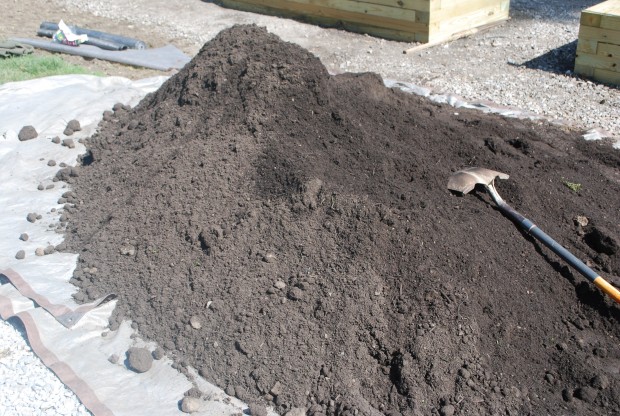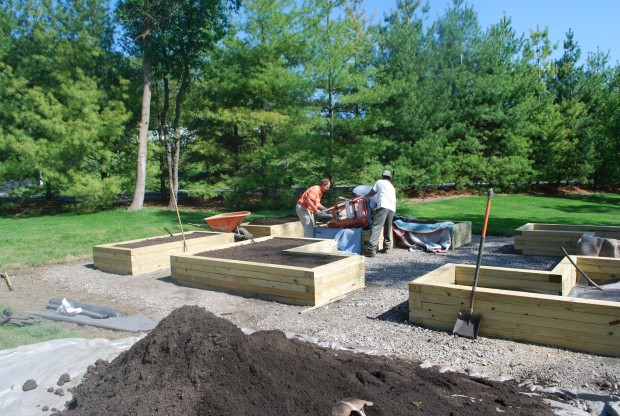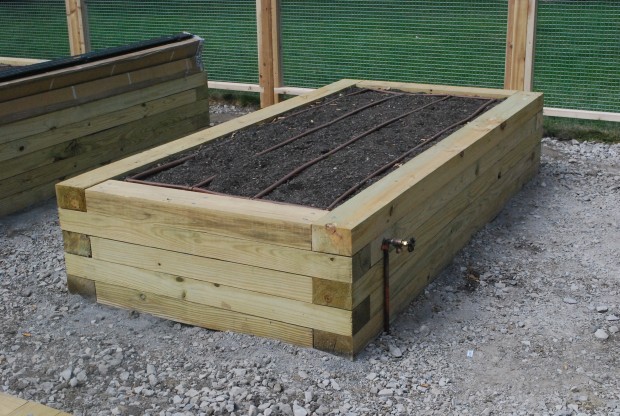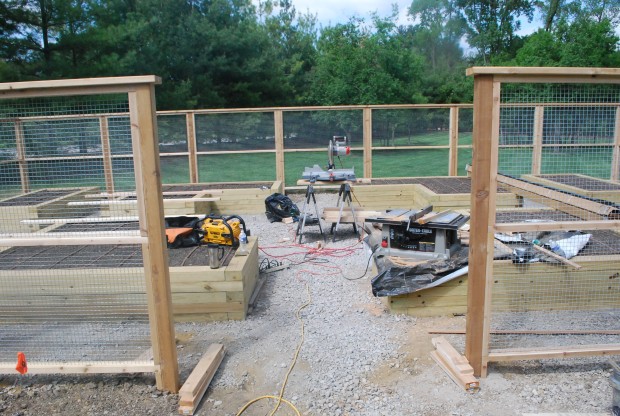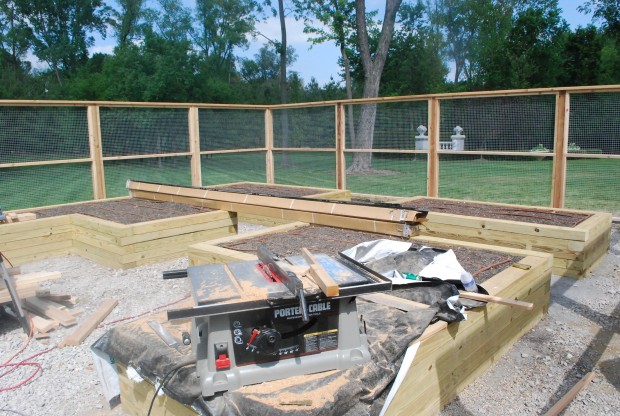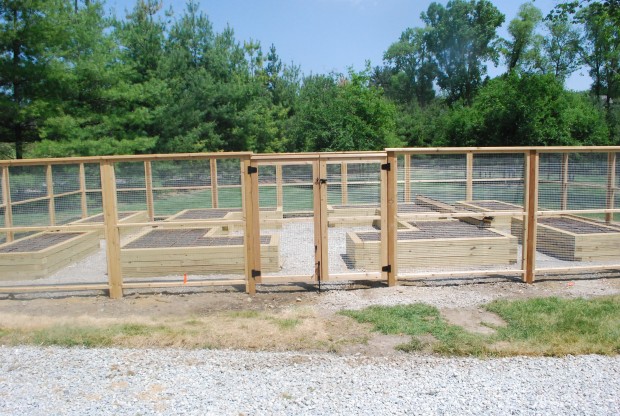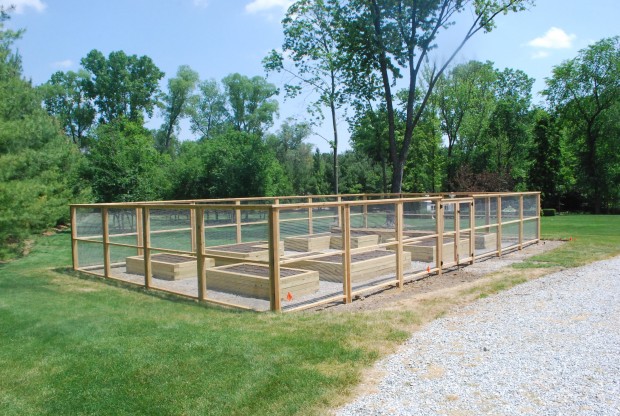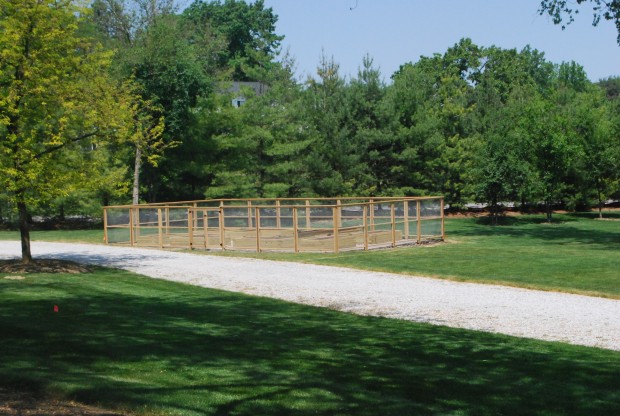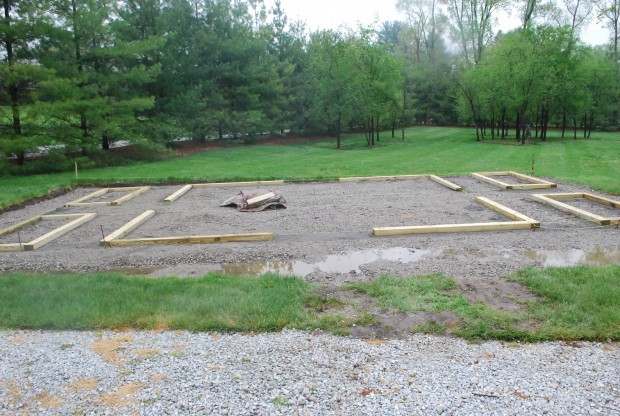
If you read this blog regularly, you may recall we started building a vegetable garden for a client about 6 weeks ago. A lot has gone into that project, but finally the physical structure was at a stage where we could plant.
The first to be planted was a collection of 5 espalier fruit trees. A pair of double candelabra apple trees trained in the shape of an arch were planted on either side of the gate. Centered on each side of the fence, a pair of quadruple cordon pear trees.
The idea is to allow the horizontal arms of the pears to grow the entire width of the fence. Though this heavy wire mesh and cedar fence is handsome, I can imagine the entire front face of this garden covered in leaves-and hopefully, pears.
Though the Gala apple arches had been trained in this arch shape for years, we built a simple steel rebar arbor onto which each branch could be tied. Once the major branches put on sufficient caliper, this arch will no longer be necessary-nor will it be visible. The trees had been trained to form an arch that was 4 feet wide. I wanted the entrance to the garden at least as wide as the double gates. The bald spot at the top of the arbor will be covered in just a few years. The walkway into the garden, and all of the garden floor is compacted decomposed granite.
Though the pear espaliers have 4 distinctively horizontal arms, the secondary branches could easily be allowed to grow out, making a solid green wall. The espaliers we buy are grown in giant containers, with the trunk at the back. This makes it easy to plant the espalier close to the fence.
This vegetable garden table was inspired by English auricula theatres. Tiered stands that permit the staging of potted specialty plants, as in auricula primroses were very popular in England in the 19th century. This steel three-tiered plant stand will be covered in clay pots, planted with herbs and small growing flowers. The copper pipe through the center of the table is for irrigation. At the east end of the garden, a spigot was installed for handwatering. Though each box has drip irrigation, there is no substitute for the sure hand and good judgment of a gardener.
Steve built a bamboo teepee for pole beans. The beans are planted only on the north side of the box, so the orange bell peppers planted underneath will still have good light. Some of the vegetables have been growing in containers in a greenhouse, waiting for the garden to be ready to plant. Each group of plants is clearly marked as to variety on large wood markers.
By no means do I mean to imply I am a vegetable gardener. I am a serviceable gardener. My clients have to take ownership now, and grow with this garden. This first year will provide an opportunity for them to decide what they really wish to grow. Everyone’s taste in food is so individual. This first planting has a little bit of a lot going on for them to try.
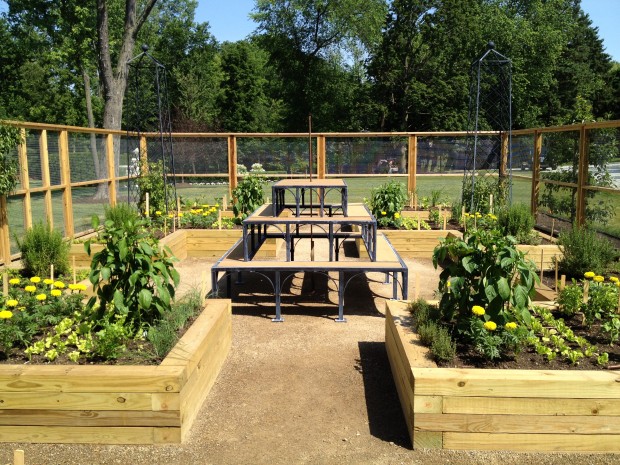
There are leeks, onions, and salad onions. A fresh crop of lettuces. Bell peppers, pole and bush beans, and 4 types of tomatoes. Eggplant, patty pan squash, and four varieties of cucumbers. There are loads of herbs-rosemary, Greek oregano, flat leaf parsley, three types of basil, and thyme. Three types of mint, and lots of cilantro. Steve laid this garden out from the plants and seeds that I bought, as he has lots of experience with this sort of thing. The yellow marigolds-just for fun. Early next week, we will plant the clay pots, plant perennials and roses outside of the garden, reconfigure the edge of the driveway, and plant some grass.
